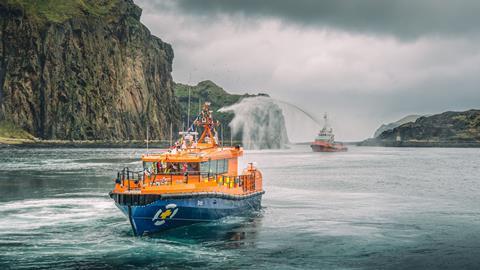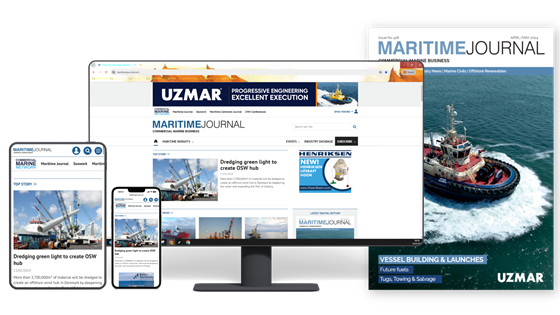An all-weather search and rescue boat that ticks all the boxes.
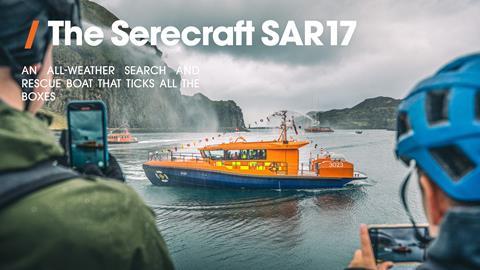
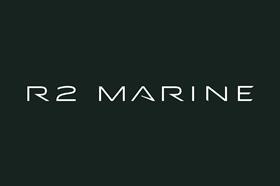
At R2 Marine, close collaboration with our clients is at the core of our design process. Given the competing nature of a vessel’s functions, joined-up thinking and an iterative procedure (test, tweak, repeat) are crucial in developing solutions that meet client’ requirements.
Take the Serecraft SAR17, a search and rescue (SAR) vessel we designed in partnership with Kewatec Shipyards. This collaborative effort has resulted in a boat with a performance, stability, and structure that perfectly match their intended usage.
Performance: the devil is in the detail
It’s of paramount importance that SAR boats reach their distress locations quickly. This, however, presents a conundrum: you need high speeds to be fast, but you also want to minimise accelerations to avoid seasickness.
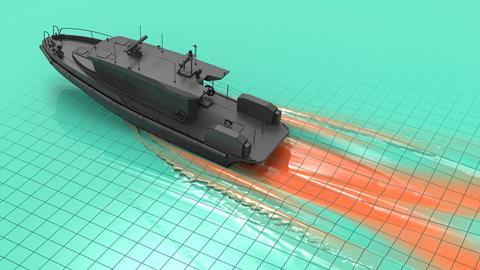
We used computational fluid dynamics (CFD) simulations to reconcile these conflicting requirements. The models enabled us to accurately predict the vessel’s drag force and motions and, ultimately, to optimise the hull so that it meets the client’s needs perfectly.
The optimisation process revolved around creating a hull form with low drag and good handling. One of the decisions we made was to opt for a sharp waterlines to reduce wave resistance. Another was to model smaller features such as interceptors, sprayrails, and appendages, due to their impact on performance. Their improved designs resulted in a two-to-five knot increase of the vessel’s maximum speed.
We also included in the CFD analysis the shape of the boat’s wheelhouse. Driving at high speeds (close to 40 knots) is the norm with SAR boats, which makes aerodynamic drag an important consideration.
Stability: helps to save lives, safely
Stability is significantly more important for SAR crafts than for any other commercial vessel; they operate in rough conditions and capsizing is more likely to happen than most people realize. To protect the crew and keep rescue missions running, SAR boats must be able to roll back to their normal, keel-down position. This principle is called self-righting.
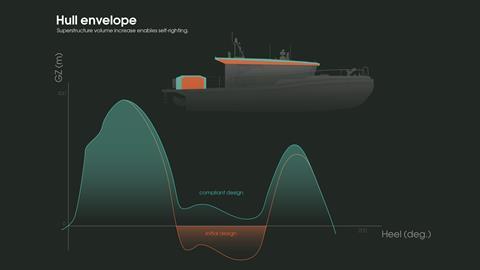
Getting the distribution correct between masses and volumes is crucial when designing a self-righting boat so that if it capsizes, the balance of masses and volumes is ‘disturbed’, causing the boat to turn itself back upright.
Achieving this balance requires accurately estimating the vessel’s load conditions. We took into account both light and full load conditions to determine the boat’s displacement and centre of gravity. Keeping the importance of self-righting in mind, we placed a buoyant volume as far aft and of as much height as possible.
We iterated the shape of the wheelhouse and analysed the boat’s GZ curve, a graphic that shows the boat’s lever of the righting moment over a range of heeling angles between the boat’s centre of buoyancy and its mass. When this curve is positive, it means that the boat can correct itself when in a heeled position.
Structure: minimal slamming loads and hull vibrations
Minimising the bow’s slamming loads in rough seas was one of the end-user’s requirements; bow-boarding at rocky shorelines was another. We complied by designing a strong but lightweight DNV-certified structure. We chose to do it this way because the aluminium mass accounts for roughly 40% of the vessel’s total displacement.
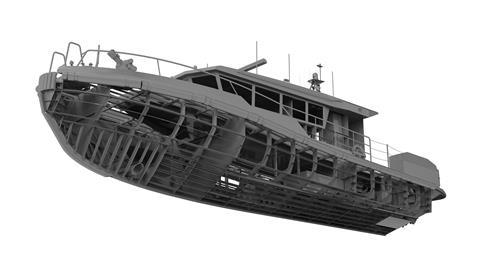
Then, we opted for a floating cabin design to improve crew comfort and make it easier to install technical equipment. The wheelhouse is bolted down to the deck, interfaced by an elastic polyurethane as isolation material.
The use of this material is also easily explained. It minimises the transmission of hull vibrations, reducing the helmstation’s decibel levels and enabling the crew to stay focussed on what’s most important: their search and rescue mission.
The vessel is designed to have side towing capabilities and be able to withstand significant side loads. Therefore, a lot of thought went into the layout and the supportive structure of the fenders, to ensure functionality without compromising on ease of maintenance.
The Serecraft SAR17: a force to be reckoned with
Many important factors come into play when designing a SAR vessel. Its operational profile is inherently demanding: it requires a boat with top-level functionality and the utmost in reliability.
Combining an iterative and agile design approach with seamless communication enabled us to design a boat that strikes the perfect balance between performance, stability, and structural efficiency.
